Australian Grasslands
Snapshot: Dry climate with seasonal fires and floods. The land of extremes (and marsupials).
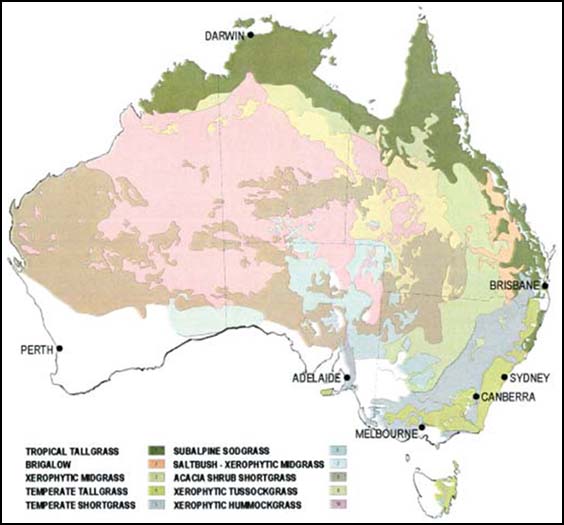
Outback Snapshot
Australia Grassland: Land of Extremes
Australia is a land of extremes with fire followed by monsoons, followed by drought. The plants, animals, and people that live here are particularly hardy and well adapted to their climate. Much of the land is a mosaic of grasses, shrubland, and open woodlands, with only the coasts being capable of thick forests.
Morley in an 1961 paper spoke of the soils of this land: “Australian soils are rich only in the diversity and intensity of their deficiencies.” Of course, this is not the first time a grassland ecosystem has been called poor habitat. However many of the grasslands in Australia are relatively in tact due to the soils being poor for farming. The areas that have been lost have been primarily through converting the land to pastures, overgrazing by livestock, and invasive plants disturbing the natural flora.
Wildfire Cycle
While many grasslands naturally go through wildfire seasons (or are managed by prescribed burns) Australia can take this fire season to the extreme. The 2019-2020 fire season was one of the greatest disasters of the natural world in recent history where 33 humans and some 4 billion animals lives were lost in a few short months. One of the reasons this event was so catastrophic was due to the intensity of the fires and the subsequent spread. During a normal year, the fires are mostly restricted to the grasslands of Australia which have evolved alongside fire and are capable of bouncing back. In the 2019-2020 season the fires raged into the forested Southern territories of Australia and left no safe havens for wildlife to avoid the destruction. Many animals died from the fire, dehydration, or starvation afterwards as the land struggled to recover.
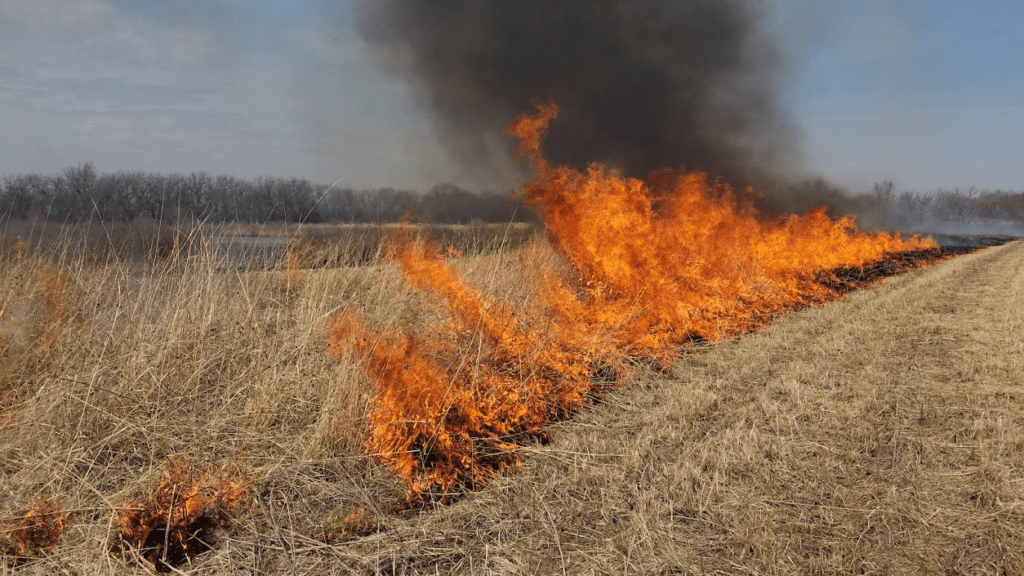
This terrible tragedy had been on many scientists’ radars for years. Global climate change, increasing fire season lengths, and a decrease in summer rains led to many people speculating a future crisis of some kind but their concerns were mostly ignored by those in power. This is not a new story to that of conservation, but hopefully with more pushback from the public as well as education things can change.
For Australia, the land of extremes, the wildfire season is often followed by a flood season which further helps the land to bounce back from fires.
Home of the Strange Mammals
Australia is well known for their plethora of marsupials (mammals which contain a pouch for raising young), but they actually originated in North America. Marsupials then spread down to South America where they did super well, traveled to Antarctica and then over to Australia back when all of these continents were connected (about 55 million years ago). The marsupials really enjoyed their new home, and today you can find about 250 marsupial species in Australia, 120 species in South America, and just a single species in North America: the Virginia opossum.
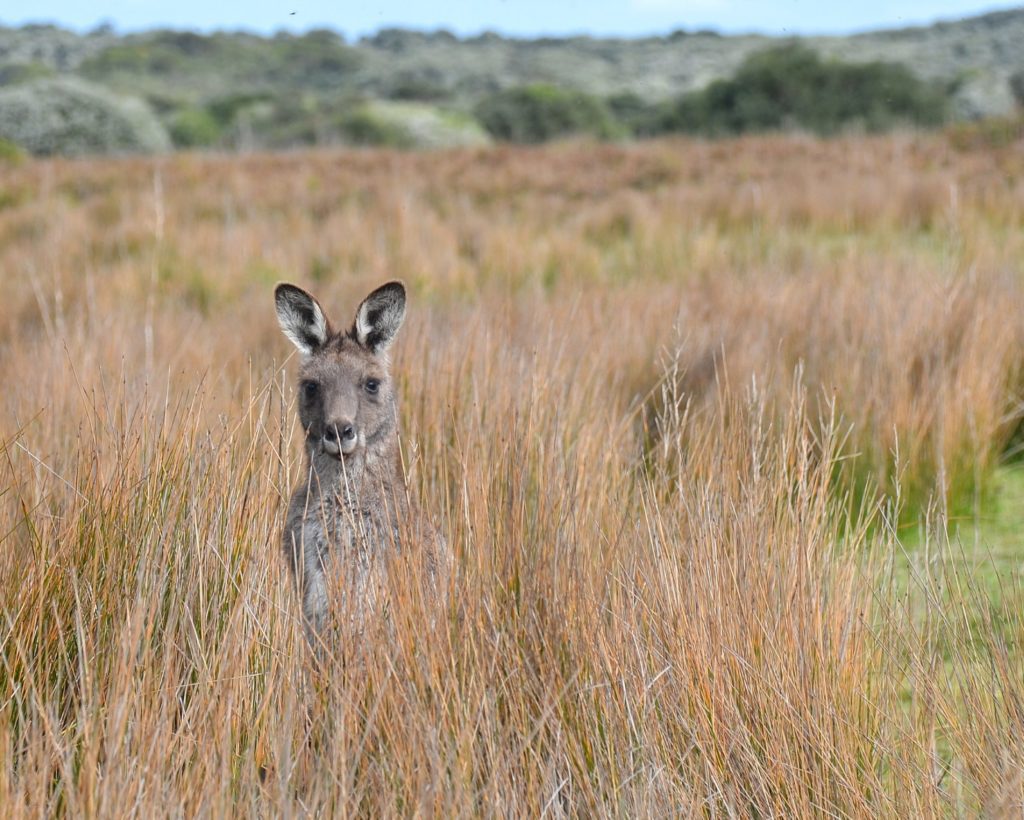
Tussock Grasslands
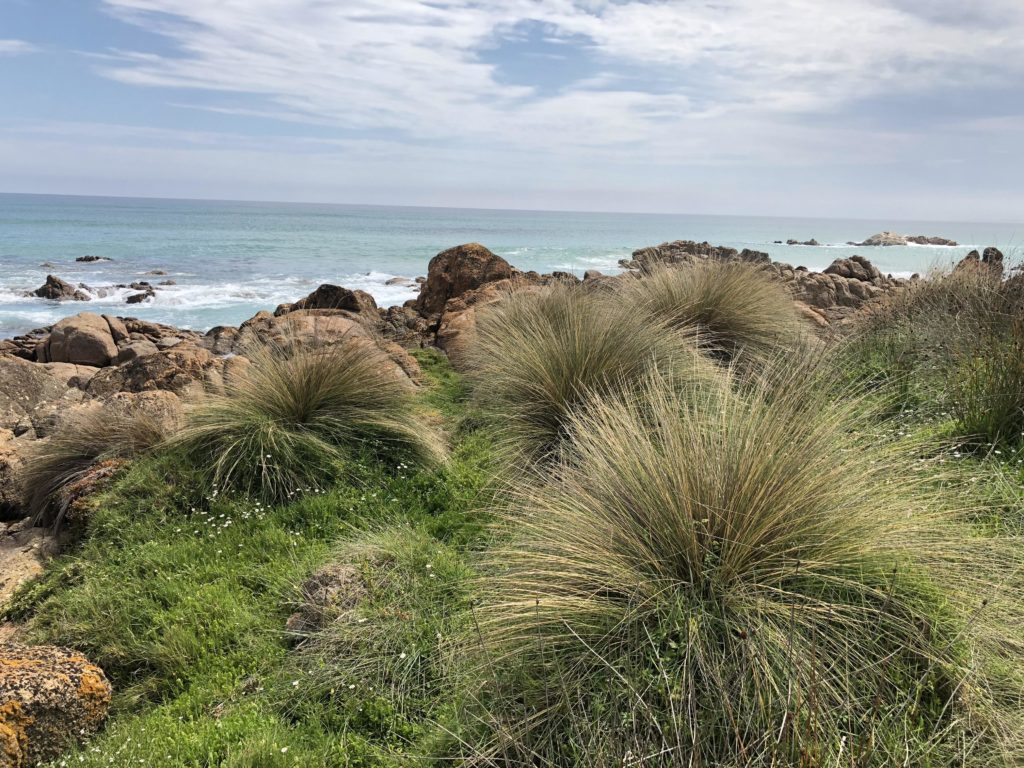
The land of clumped grasses.
The word “tussock” refers to the type of grass that dominates this landscape: one that grows in large clumps and spills over itself forming little mounds. Many small mammals find shelter under these grasses and grazing animals find it irresistible. You can find kangaroos, monitor lizards, and dunnarts galore in these grasses as well as Kites and Cockatiels overhead and strutting Australian Bustards on the ground.
Tussock grasses can also be found along the coast, where coast tussock-grass is very common.
Hummock Grasslands
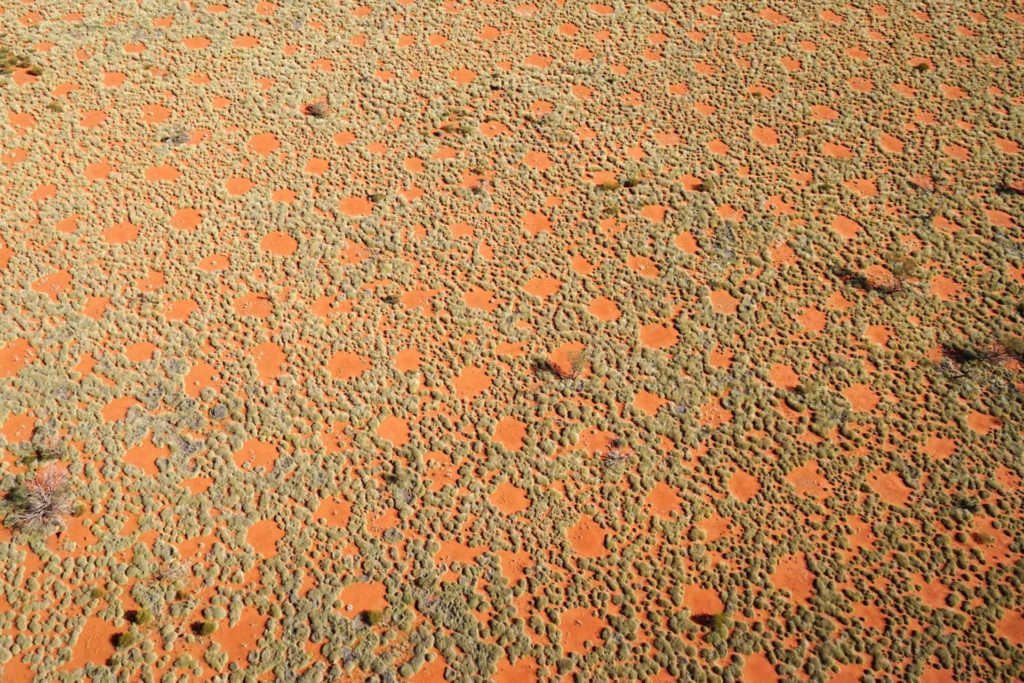
Harsh, spine-filled ecosystems.
Hummock grasslands dominate the less fertile parts of Australia and are mostly made up of spinifex or porcupine grasses. Also sometimes called an “open woodland”, these grasslands have quite a few trees including acacia and eucalypt species. This grassland type covers most of inland Australia.
With precipitation being so limited here, when it rains the hummock grassland will bloom all at once in a beautiful display. The grasses grow in circular clumps and as a clump ages the middle will die off leaving “fairy circles” scattered across the landscape. Other theories for fairy circles include interactions with fungus in the soil, and rainfall variation.
Open Woodlands
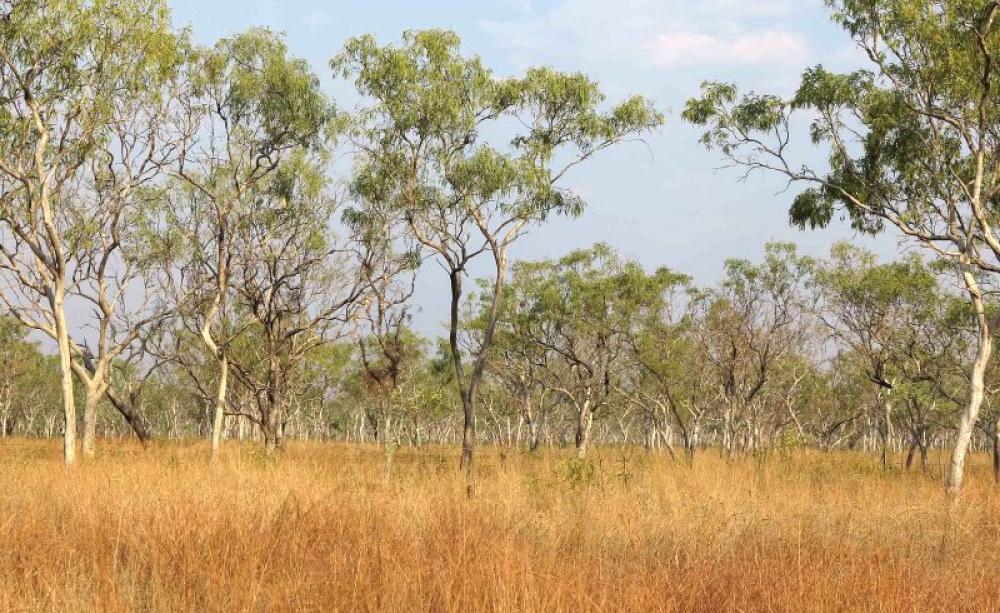
The savannas of Australia.
Two more “almost grasslands” exist within Australia: the eucalypt and acacia open woodlands. These two ecoregions have a tree cover of 10-30%, with much of the understory being hummock or tussock grasses. The eucalypt open grasslands lie nestled within the true grasslands of Australia, while the acacia open woodlands reside primarily in the South. These areas both have been affected by overgrazing by livestock such as cattle and sheep as well as an increase in fire intensity. These open woodlands are also referred to as savannas and are similar in tree cover to African savannas.
Sources/Further Reading
- Geggel, Laura. Why Are There So Many Marsupials in Australia? LiveScience, 3 Mar. 2019.
- Glover, Richard. Seven Months after the Bush Fires, Australia Is Still Devastated. The Washington Post, 30 July 2020.
- “In the Matter of the Royal Commission Into National Natural Disaster Arrangements, Hearing Block 1 Day 1.” Transcript of Proceedings, 25 May 2020.
- “National Vegetation Information System Factsheet Series“. Department of Agriculture, Water and the Environment.
- Australian Native Plant Society.
